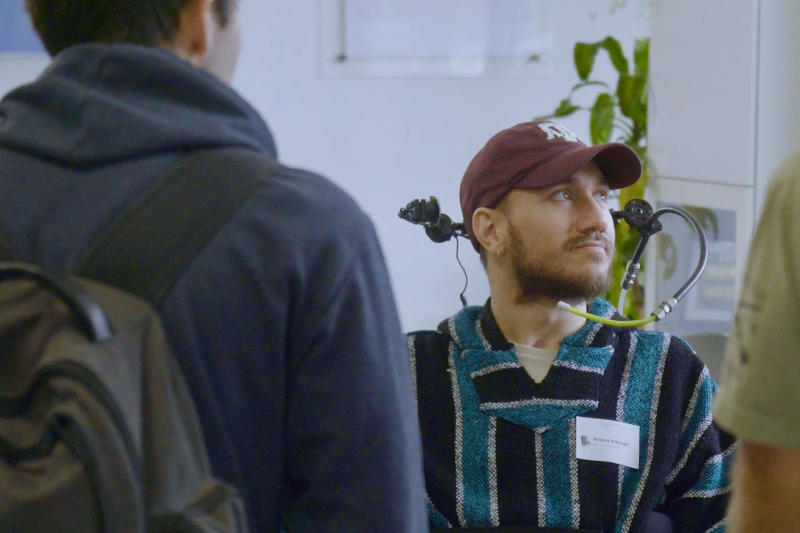Noland Arbaugh, a 29-year-old American who was the first to receive a Neuralink brain implant, told RIA Novosti how he lives with this device in his head. The volunteer uses the technology ten hours a day and does not experience fatigue.

Image source: neuralink.com
Ten hours of work with the Neuralink implant a day is not the limit, Noland said: one day, when he could not sleep, he turned on the device at two in the morning and used it for 17 hours in a row – he played and charged it twice using a wireless station. But more often he uses the implant for about ten hours a day, four of which are spent collaborating with Neuralink developers. However, the remaining six hours also benefit the research.
«We work for four hours from Monday to Friday – these are structured sessions with Neuralink during which we conduct research,” says Arbaugh.
Seven years ago, Arbo survived an accident, suffered spinal cord damage and became paralyzed, and in January 2024 he became the first volunteer to receive a Neuralink implant – it wirelessly transmits commands from the brain to a computer. To give a command, Noland imagines the movement he wants to make – the device receives brain signals and translates them into commands, and it additionally learns. At some point, working with the device reached a new level: if previously the user tried to make a movement so that the cursor would repeat it, now he simply thinks for it to move, and the cursor obeys him. “I no longer try to make the movement itself to make the cursor move, I just think about making it move, and it moves,” says the test subject.
Arbo also shared his opinion that many of the electrodes of the Neuralink device in his head had shifted and stopped picking up signals during use. Despite initial difficulties with the electrodes moving away from the brain, Arbaugh has seen significant progress since reconfiguring the device. According to the subject, although only about 15% of the electrodes are currently functioning, the effectiveness of the implant has increased markedly compared to what it was in the beginning. “Now I am capable of much more than at the beginning of the experiment. This just blows the roof off,” he emphasized.
Arbo’s enthusiasm extends to the future of technology. He suggests that if further participants in the experiment can achieve full or almost complete activation of the electrodes, this could open up completely new possibilities. Overall, Arbaugh remains optimistic and encouraged by the results of the experiment, emphasizing that even with current limitations, the technology shows impressive potential.
The owner of Neuralink, Elon Musk, recently expressed hope that the development of technology will not stop there, and in the future, people with an implant will act even “more efficiently than ordinary people.” A second volunteer will be fitted with the device in the coming weeks.